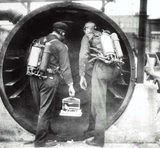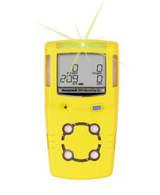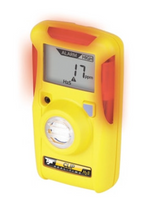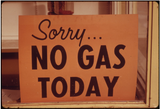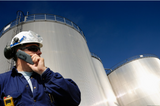Blog
Don’t Die in a Sewer
By Luke Laggis, Editor, Municipal Sewer & Water Magazine
Educate yourself and your crews, and take every necessary step to make sure no one becomes a victim.
Wastewater work is important. We champion the work you do in every issue of
MSW. But no sewer line problem is worth dying over.
Accidents happen all the time. All too often they’re the result of shortcuts, of failing to take simple steps to protect yourself to save a little time. The industry is filled with stories of peo
…
Sep 8th 2017
Gas Detection Evolution: From Canaries to Portable Real-Time Devices
Working in confined spaces present three kinds of hazards: flammable or explosive atmosphere; oxygen-deficient or oxygen-enriched atmosphere; and atmosphere with a high concentration of contaminants. In poorly ventilated spaces, atmospheric contaminants build up to hazardous levels very fast and pose an immediate threat to life. To eliminate potential dangers while working in underground mines, tunnels, shafts, and other environments with confined spaces, it is important to use the right test
…
Apr 22nd 2016
Personal H2S Monitors For Less
If your company needs to supply personal hydrogen sulfide monitors to its employees, now is a great time to stock up on
BW Honeywell Single Gas H2S detectors. BW Honeywell is the leader in lightweight, reliable H2S detection so finding a GasAlert Clip Extreme H2S Monitor on sale is like finding $20 on the ground. If you have lots of employees, it's like finding thousands of dollars just lying around, and who doesn't like to save money?
Workers use H2S monitors, and they lose H2S moni
…
Sep 23rd 2015
Confined Space Gas Limits: The Importance of Gas Monitoring in Confined Spaces Pt. 2
The second in a two-part series on confined space gas monitoring:
They say that knowledge is power. This is certainly the case when it comes to safety in confined spaces. It is only after we are aware of the potential dangers of confined spaces that we can recognize a seemingly empty space as containing life-threatening possibilities.
BW Honeywell GasAlert Micro Clip XL 4-Gas Monitor
In the first part of our Gas Monitoring discussion, we talked about Oxygen (O2) levels and Lower Explosi
…
Feb 27th 2015
A Hydrogen Sulfide Horror Story
Confined spaces can be very spooky places. With inhabitants like molds, creepy crawlies and deadly gases, it's easy to see why: they're among the harshest places on the planet.
A rural Maine community
experienced this firsthand when Winfield Studley and Richard Kemp, two workers with Stevens Electric and Pump Services, suddenly went missing on the job.
The two had spent the morning draining and servicing a flooded sewage tank connected to a local inn. At some point over the cou
…
Nov 21st 2014
What Is Hydrogen Sulfide?
Hydrogen sulfide (H2S) is a deadly gas common at many industrial work sites. It must be handled carefully because its toxicity is similar to cyanide, and even slight exposure comes with a host of health concerns.
Where does it come from?
H2S has few industrial applications on its own, but can be used to harvest sulfur, one of the most useful and versatile elements in the industry. It is commonly sourced from natural gas and petroleum deposits for this purpose.
Even if you do
…
Nov 7th 2014
Getting The Right Gas Monitor For Your Company
Gas detection is serious business no matter what type of work you do. Your company may not need the level of protection a petroleum production facility requires, but every company using gas detection technology wants to make a good investment in their monitors. Some work sites need to know if hydrogen sulfide levels change even a small percentage. Others are fine waiting for the alarm to sound. The differences in your gas monitoring needs will affect the type of gas monitor that's right for y
…
Oct 29th 2014
H2S Monitor Bump Test: How Often Should My H2S Monitor Be Bump Tested?
A customer from the Chinese division of a large petroleum company emailed us this week to ask how often their
BW Clip H2S Monitors should be bump tested. Since we sell more of these monitors than any other at PK Safety Supply, it would seem logical that we'd have a ready answer. But we don't.
It's not because we don't care, or we don't think it's important. It is. Here's the situation: Officially, the manufacturer BW Honeywell recommends periodically testing the response of the hydro
…
Apr 28th 2014
BW H2S Monitor Expiry: When is the Expiration Date for my Disposable BW Gas Monitor?
This is a great question about the
BW Clip Extreme H2S monitor, and I'm surprised we haven't had it before. A customer from our website asks "How long of a shelf life does the monitor have?"
The answer is each monitor has a unique turn-on date that is set one year after the manufacturing date. The warranty is tied to this manufacture date as well. BW provides a warranty for one year of shelf life plus the two years after activation.
If you have a monitor that is past its turn-o
…
Apr 14th 2014
Oil & Gas Facilities Moving Toward Multi-Gas Monitors
As oil and gas production continues to expand in the United States and other countries, many companies are seeing the benefit of personal gas monitors that check for more than just hydrogen sulfide. Refineries, processing plants, pipelines, storage farms, and offshore platforms all use or create a wide range of toxic gases and dangerous atmospheres. While single gas monitors like the
BW Clip 3-Year Detector H2S are ubiquitous, they aren't capable of warning workers of all the changing cond
…
Apr 7th 2014



